What are the best books for personal trainers?
The answer is important because 50,000 personal trainers quit the industry every year. Not because they don’t know enough. Not because they’ve lost their passion for helping others find fitness. They leave the industry because they can’t make a living.
The right books might help personal trainers and coaches thrive instead of flee.
Here’s a how a book changed my career path:
When I graduated from university, I had education. But I also had loan debt, and it took me a year to get a single paying personal training client. I had to take a job in a treadmill store to pay the bills. After I got the first client, I grew quickly—not because I knew more about training but because another salesman handed me a book.
The first book that helped me thrive as a personal trainer: “How to Win Friends and Influence People” by Dale Carnegie.
Years later, I still consider it one of the best books for personal trainers. In fact, I believe it’s mandatory reading for any coach. That’s why it’s at the top of my and Joleen Bingham’s list of the best books for personal trainers.
Best Books for Personal Trainers: The Top 12
“How to Win Friends and Influence People” by Dale Carnegie
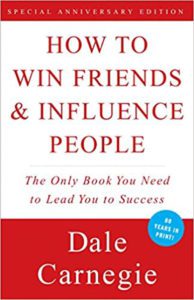
Clients choose personal training for many reasons, but the two main reasons they stay are results and relationships. Don’t let the age of Carnegie’s book fool you. Even after more than 80 years, it still contains the best advice for creating positive relationships, earning client trust and helping clients make lasting changes.
The communication tools in this book will help you increase the influence you have on clients’ lives and keep them for years. It will help coaches see things from a client’s point of view and reframe any setbacks in a positive way.
It’s simply an essential book for personal trainers. If you haven’t read it, get it today.
“The Wealthy Fit Pro’s Guide to Getting Clients and Referrals” by Jonathan Goodman
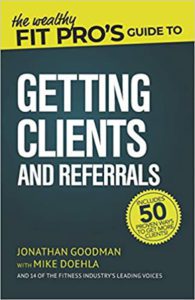
This book is a new favorite for personal trainers.
You cannot be successful as a personal trainer if you don’t have clients to train. We all know that clients rarely just show up at your doorstep, and the process of acquiring them can often be costly and time consuming.
If you’re a trainer who has ever asked, “How do I get new clients?” Goodman’s book provides 50 proven ways to do so. Even better, he provides actionable steps you can take immediately after reading. The strategies are so effective that I use this on a monthly basis with the trainers in my own business to help them build their clientele.
“Never Split the Difference” by Chris Voss
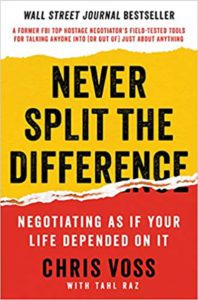
A client is really buying a 1:1 relationship with a personal trainer.
To be successful, you have to know how to sell that relationship—and keep selling it. The key is to understand exactly what problem the client is trying to solve. When you know that, you can confidently make a prescription to solve it.
And that’s the key to great selling: It’s not sleight of hand but putting yourself in their shoes. Voss, a former FBI hostage negotiator, tells you how to listen for the client to say “that’s right” and then release their fear—and their money.
“Change Maker” by John Berardi
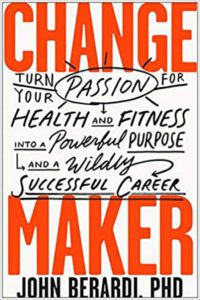
According to Berardi, 40 percent of new personal trainers will leave the field within a year. “Change Maker” lays out a blueprint so you can avoid the burnout by creating a purposeful career, satisfying enthusiastic clients and generating enough money to support your lifestyle.
The real highlight of the book is a collection of tools to help you find your unique abilities and your purpose in the fitness industry. With general concepts like “follow your passion” and “discover your why” so common, Berardi asks specific questions to help you attract the right type of client, enjoy your day-to-day work, and create lasting change.
“Never Lose a Customer Again” by Joey Coleman
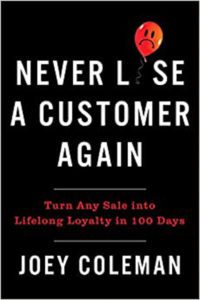
What if you could keep all the clients you sold to? It would have a significant effect on your bottom line, right? The sales process is an emotional journey, and the first 100 days after the sale are the most important to client retention. In “Never Lose a Customer Again,” Coleman presents specific examples of how to create a great client experience and make clients feel appreciated during each phase after the sale.
If personal trainers read this book, clients will stay longer and become their best source of referrals.
“Motivational Interviewing in Nutrition and Fitness” by Dawn Clifford and Laura Curtis
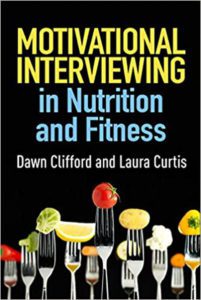
The real key to long-term success is your ability to maintain relationships with your clients for years. Methods and diets come and go, but your client relationships can survive changes in your training philosophy and changes in your physical location if you understand what they really want.
The coaches with the best retention in the world practice motivational interviewing at intake, and they repeat the process with each client regularly. When your job is to change behavior, you have to understand motivation. And what motivates our clients isn’t the same thing that motivates us.
“The Go-Giver” by Bob Burg
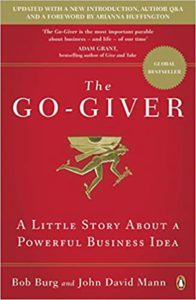
Bob Burg’s book changed the way I viewed client treatment and my relationships with clients. I’m not naturally an empathetic person, and that stopped me forming longer, deeper relationships with my clients. I didn’t really want to go to their kid’s wedding or spend my weekend watching my clients play hockey. But Burg’s book made me realize that the real joy in my job came from sharing experiences with my clients—even more than getting them fitness results.
Burg’s central premise: “Be the connector.” It’s not important that you have every answer for your clients; it’s more important that you can connect them to the right people. Connecting them with others doesn’t weaken your relationship—it strengthens it.
But the storytelling in Burg’s book also gave me a great gift: It opened my eyes to the simple joy of delighting other people. One good example: I began making espresso for clients after their workouts. I didn’t do it every time, and sometimes they declined. But those who took me up on my offer loved it, and I felt great because I had made them feel good. That lesson now permeates my personal life and my businesses.
“Help First” by Chris Cooper
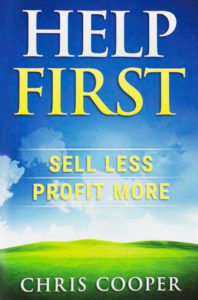
I wrote “Help First” before I read “The Go-Giver,” and I’m glad I did. If I’d read Burg’s book beforehand, I probably wouldn’t have written “Help First.” But that would have been a mistake. “Help First” was my from-the-heart explanation of how I approached sales and marketing in my gym and as a personal trainer. It isn’t my bestselling book, but it’s the book most often quoted back to me or cited by other gym owners when they’re doing some caring work for their community.
“Help First” explains how I do marketing and sales without feeling slimy about it. That can really help a beginning personal trainer who realizes it just isn’t enough to know everything about fitness. Trainers and coaches must learn how to sell themselves to clients every day.
The book is powerful: There are dozens of examples of how to use the philosophy in practice and to increase your client load—all while feeling great about yourself. Without this philosophy, I wouldn’t have survived in business, let alone built a legacy.
“The Pumpkin Plan” by Mike Michalowicz
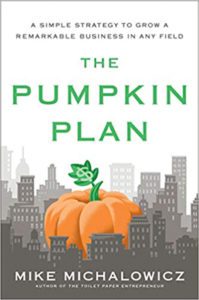
You want to do your best work every day. But to do your best work, you must have the right clients.
Clients who don’t value your service appropriately stop you from doing your best work—because you have to do your “discount” work or do more work than you can handle. And if you don’t have enough good clients, you can’t do your best work for long.
The key, according to Mike Michalowicz, is to identify your best clients and focus on what they need. Over time, you’ll find that your worst clients drop away, but your best clients grow. Michalowicz suggests speeding the process by firing your worst clients, but I’ve only had to take that step in the most dire circumstances. Still, the question “who are my best clients and how can I serve them more?” has made me more money without all the distracting squeaky wheels.
Reading this book signified the start of my understanding that it’s better to have fewer high-value clients than to have a high volume of clients coming and going all the time. This realization can do wonders for a personal trainer who will soon find out that you simply can’t coach 13 hours a day.
“How Many Friends Does One Person Need?” by Robin Dunbar
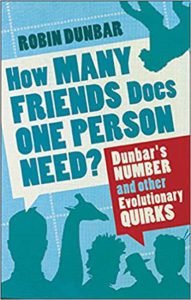
We’re in the relationship business. So every few months, I pick up a book to make me better at relationships. Over the last 12 months, as we’ve collected and published data on the best training businesses in the world, it’s become clear that the size of your coaching business really depends on your ability to maintain the right relationships.
It’s not marketing, it’s not sales, and it’s not a degree in kinesiology. It’s all connection.
Robin Dunbar is the originator of the “150 model of congregation”—it’s literally called “Dunbar’s number” in most scholastic textbooks. This book shares how groups of five, 15, 50 and 150 connect.
If I’d had this book a decade ago, I could have doubled my income from my personal-training studio. My retention would have improved, I’d have raised my prices, and I’d have started partnering clients together. But I also would have focused harder on what happened between our sessions and how I made clients feel. Many of the early CrossFit adopters were successful precisely because of the lessons taught in this book: common language, a “triad” of support, a mutual foe and a clear mission.
“The Power of Habit” by Charles Duhigg
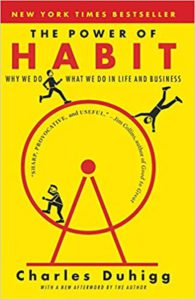
I’ve been writing about Chip and Dan Heath’s work on motivation and behavior for over a decade. But in this book, Charles Duhigg—a student of the Heath brothers at Stanford—breaks down the process of forming habits.
What will bring success to our fitness and nutrition clients? Almost any workout or diet they can stick to long enough. The real struggle for most trainers isn’t knowledge; it’s the ability to keep clients on a plan long enough to see results. In other words, it’s helping others form the habits necessary to change their lives.
This is an important book for anyone who works with changing behavior. And really, that’s every single personal trainer and coach.
“Tribes: We Need You to Lead Us” by Seth Godin
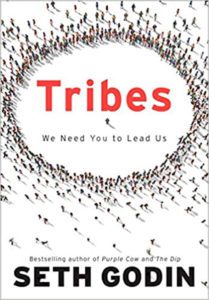
Seth Godin has an entry on almost every Top Books list that I write, and it would be easy to substitute some of his other books here (“This Is Marketing,” “Purple Cow” or “Unleashing the Ideavirus” are all among the best books for personal trainers).
But many one-on-one coaches have a blind spot: They view each client as a distinct unit instead of viewing their client list as a whole. They don’t unite their clients; instead, they separate their clients into time slots. While many 1:1 clients choose that option for privacy, they could still benefit from meeting others in your business.
In fact, the greatest retention strategy you can have with each client is to introduce him or her to at least one other client in your personal training business. They don’t have to work out together, but every relationship a client forms in your business adds another strand to your web of retention. In this book, Seth tells us how to pull a group together and how to guide it through dark times, too.
Two-Brain Clients’ Best Books for Personal Trainers
In a survey of our clients, the top gym owners in the world echoed some of our choices with “How to Win Friends and Influence People,” “Change Maker” and “The Go-Giver.”
They also named the books below as essential literature for coaches and personal trainers. If you’re a personal trainer, these are the best books for you, according to gym owners and entrepreneurs around the globe.
“Emotions Revealed” by Paul Ekman
“Conscious Coaching” by Brett Bartholomew
“Talking to Strangers” by Malcolm Gladwell
“Love Your Enemies” by Arthur C. Brooks
“The Prosperous Coach” by Steve Chandler and Rich Litvin
“The Power of Moments” by Chip Heath and Dan Heath
Best Books for Personal Trainers: Summary
You’ll notice that none of the best books for personal trainers is about anatomy or movement. That’s because coaching is really about relationships.
The most successful personal trainers of all time differ in method but have one thing in common: They form strong personal bonds with their clients. So it doesn’t really matter if you’re the smartest one in the room—no one is hiring you for knowledge. You’re hired—and rehired over and over every single day—because people trust you and your prescription.
Relationships are far more important than the exercise method or diet you choose for any particular client. There’s nothing wrong with reading about squat technique, anatomy and physiology, and training principles—but we believe the best books for personal trainers are all about relationship building.
More Reading
“The 11 Best Books of 2019 for Microgym Owners”
“Top Books of 2020 for Gym Owners”
By Chris Cooper with Joleen Bingham, Certified Two-Brain Fitness Business Mentors

